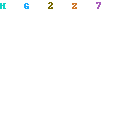
From Library Journal
The current status of human nutrition is clearly summarized in this three-volume set. The editorial board and the contributors are highly respected academics and practicing nutritionists from around the world. Topic coverage is extensive, ranging from nutrition policies in developing countries to pregnancy and steatorrhea. Each entry ranges from four to 48 pages in length and contains a list of contents, references to related articles, and suggestions for further reading. The intended readership is students, researchers, physicians, social workers, and nutritionists, but the writing is such that the work is accessible to the lay reader. An added feature is a web-accessible electronic version, which is available to libraries at a minimal yearly fee and can be IP restricted for colleges and universities (that is, the web page looks at the numerical Internet address of the computer logging to the web page to make sure it's authorized to log in). The main drawback is the high price, which puts the set out of the reach of most public and small college libraries. They may instead want to look at David Bender's Nutrition: A Reference Handbook (Oxford Univ., 1996). Recommended for medical, university, and large college and public libraries.AEric D. Albright, Duke Medical Ctr. Lib., Durham, NC
Copyright 1999 Reed Business Information, Inc. --This text refers to the Hardcover edition.
From The New England Journal of Medicine, June 3, 1999
The Encyclopedia of Human Nutrition is a superb attempt to incorporate into one three-volume textbook the many elements of the rapidly expanding science of nutrition. The book is timely, given the increased interest in diet and health by the general public worldwide. It is broad based and covers the physiologic aspects of nutrient and energy requirements of different populations; measurements of dietary intake and nutritional status; the nutrient composition of the main food groups; associations between diet, lifestyle, and disease; clinical applications of nutrition to improve health; topical issues relating to the food-processing industry; influences affecting food choice and eating behavior; nutritional guidelines and public health policies in both developed and developing countries; international aspects of food labeling; and a range of other, related topics.
The effects of the globalization of modern life are particularly apparent in the field of nutrition. Food production and the availability of food in individual countries are highly dependent on the world market, and rapid changes in agricultural policies in a few key nations can have a global impact on the prices and availability of food. For these reasons, any encyclopedia of human nutrition must be international in its content. Appropriately, this book has an international editorial board and an international set of authors.
Because the table of contents is arranged alphabetically, many unrelated topics follow one another in the three volumes. I found this approach somewhat confusing. By contrast, the cross referencing in the table of contents is excellent and helps one find a particular subject easily. Each volume ends with a comprehensive set of tables and charts (Appendix II). The index is excellent and user-friendly in terms of helping the reader find tables, discussions of major topics, and cross references. The format of the index should serve as a template for other comprehensive textbooks. However, it seems to me to be a waste of pages to reproduce Appendixes I and II in each volume.
In general, the coverage of most of the topics in nutrition, ranging from molecular biology to agriculture and food science and from social sciences in human behavior to clinical medicine, is excellent. The section on drug-nutrient interactions is extremely useful. However, the discussion of parenteral and enteral nutrition is superficial, and the references are not up to date. The section by Wilmore on long-term nutritional management provides additional information on these subjects. Likewise, the discussion of childhood nutrition is somewhat superficial, although the section on infant nutrition is quite good and comprehensive. Finally, fetal nutrition is a new and emerging subject that is barely mentioned.
The Encyclopedia of Human Nutrition is a superb attempt to produce a comprehensive textbook of human nutrition and should be in the library of every physician and nonphysician interested in the subject.
DOWNLOAD
E Ncyclopedia Of Human Nutrition
Search
Archives
-
▼
2009
(20)
-
▼
December
(20)
- Build Your Own PC For Dummies
- CBT Microsoft 70-403 SCVMM and 70-652 Hyper-V
- Polyesters and polyamides
- Build Profitable Websites Fast
- How to make money online
- Make Easy Money with Google
- The Secret Ever Keeps
- The Bible For Blockheads
- The Rape Of Lucretia
- Petroleum Geo - Science
- Mama's Home Remedies
- The Handbook of Good English + Vocabulary
- E Ncyclopedia Of Human Nutrition
- Art and Science
- From the author of Sexual Pleasure and Sexual Heal...
- C++ All-In-One for Dummies 2nd
- Windows 7 Secrets
- Unix and Linux: Visual QuickStart Guide
- 3D Game Programming for Teens
- Programming Microsoft® Visual C# 2008: The Language
-
▼
December
(20)






0 Comments Received
Leave A Reply